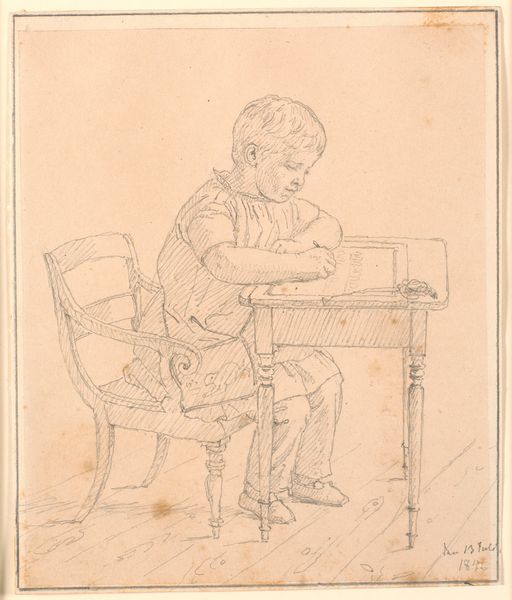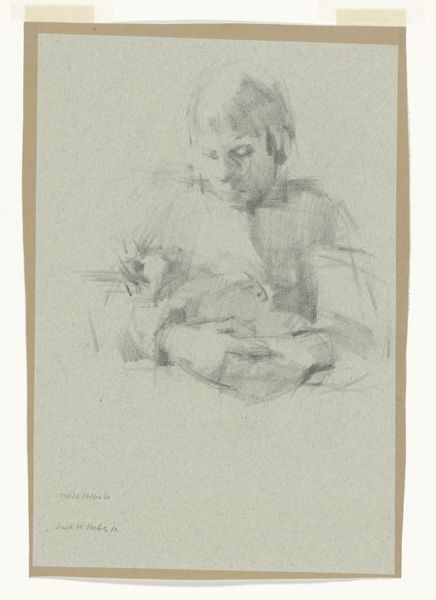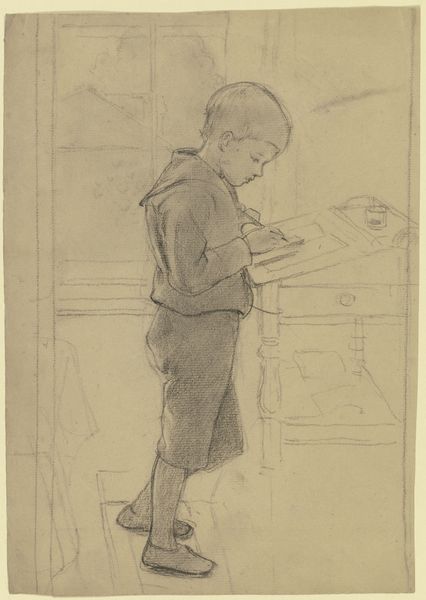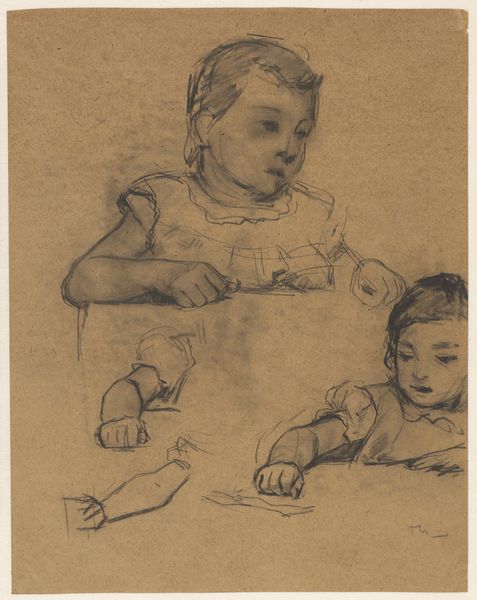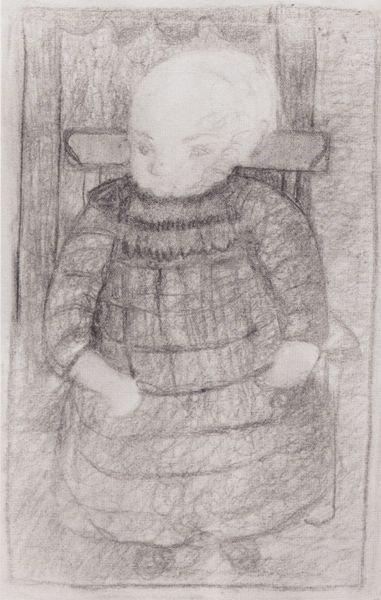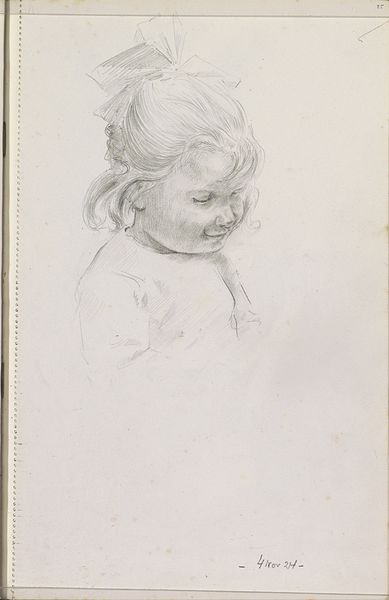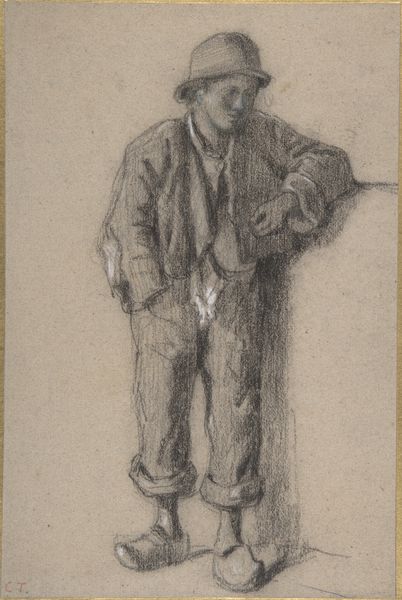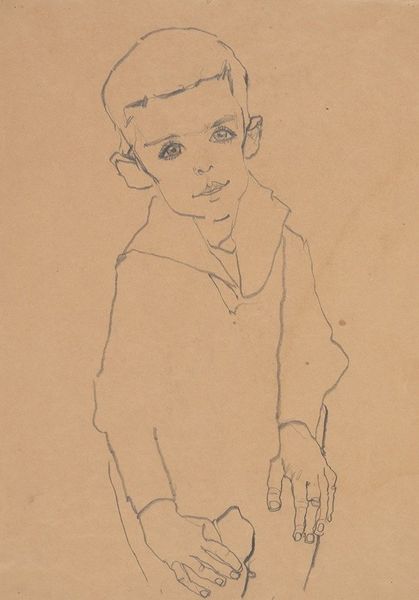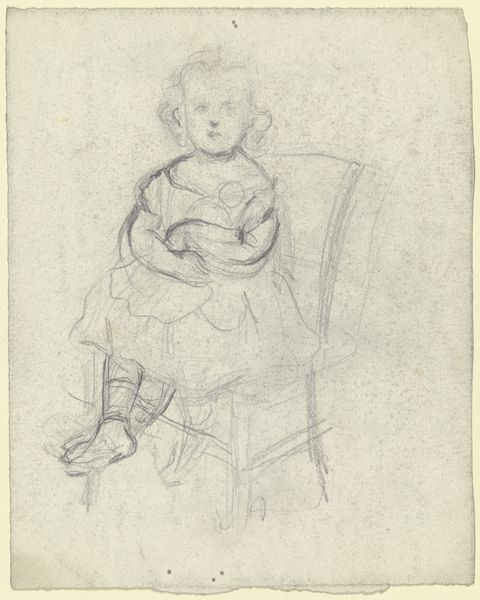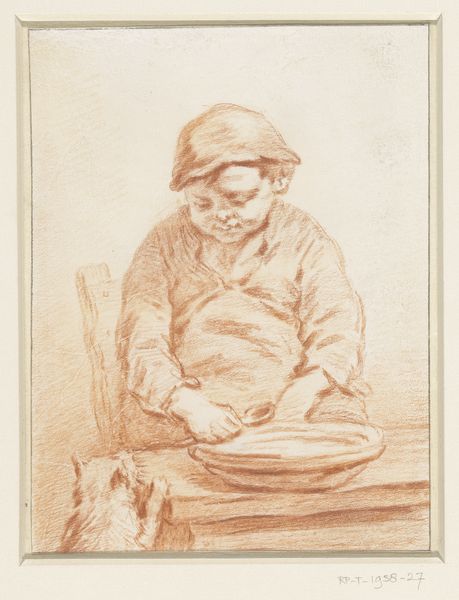
Kunstnerens søn Peter, hel figur, siddende med et dyr eller et stykke legetøj 1844 - 1847
0:00
0:00
drawing, pencil
#
portrait
#
drawing
#
pencil sketch
#
figuration
#
pencil
#
portrait drawing
#
northern-renaissance
#
realism
Dimensions: 121 mm (height) x 85 mm (width) (bladmaal)
Curator: Immediately striking, isn't it? The quietude. Editor: Indeed. It reminds me of early photographs. I'm sensing the texture even from here. Tell me a bit more about it. Curator: This is a pencil drawing by Christen Købke, created between 1844 and 1847. The title translates to "The Artist's Son Peter, Full Figure, Sitting with an Animal or Toy". It’s currently held at the SMK, the National Gallery of Denmark. Editor: "Animal or Toy," you say. So interesting. Note the visible tooth of the paper—Købke opted for something readily available. How does the socio-political context shape this image? I imagine access to art supplies at this time informed the way an artist approached their subjects. Was pencil, in particular, a choice guided by broader social circumstances? Curator: Absolutely. Pencils became more widely accessible around this period. Furthermore, Danish Golden Age painting was strongly connected with middle class identity. Therefore, Købke likely made such works both for artistic reasons and to display the kind of domestic comfort in which his middle class patrons would partake. Editor: His son becomes both the subject and perhaps also the recipient, blurring art and the everyday experience of fatherhood. Do you notice the precise execution and how carefully Købke depicts not only his son's likeness but also, the textures of fabric and even the small stool that holds Peter's weight? What does that level of precise detail tell you about the artist's intent? Curator: The detail speaks to realism—a core tenant of his artistic values and era—but the very medium, a drawing, means it likely was done quickly and efficiently. Time, materials, labor, and the constraints within those aspects inevitably inform both form and the viewer's consumption. We're reminded it is not the man himself, but only pencil. Editor: Yet the image evokes intimacy through artifice, or technique. Ultimately, that might be one of the most compelling attributes on display here. It’s quite a contrast! Curator: The way Købke uses such a modest medium to portray what must have been profound domestic and paternal scenes feels both modern and enduring. Editor: An interesting piece to reflect on!
Comments
No comments
Be the first to comment and join the conversation on the ultimate creative platform.

